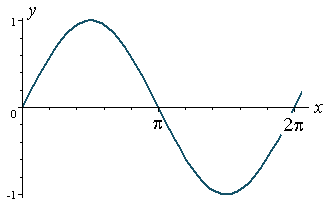Friday Math Movie - Sine Wave to Square Wave using Fourier Series
By Murray Bourne, 14 Nov 2008
We learned about sine waves in elementary trigonometry:

The idea behind the Fourier Series is to add sine curves with different amplitudes and frequencies and the resulting curve can be either a square wave, a sawtooth wave or many other interesting periodic shapes. You can see more on this concept in this Introduction to Fourier Series.
This week's movie begins with a pure sine wave tone and then the other sine curves are added to it to produce something very close to a square wave (with the odd wiggle here and there) as the number of added curves becomes very large.
Warning: The final square wave tone may be pretty loud.
See the 3 Comments below.
26 Nov 2008 at 1:14 pm [Comment permalink]
Your work is very awsome..^^ please show us your solution in solving higher dimension^^
16 Mar 2011 at 9:46 pm [Comment permalink]
Sir.
building a square wave from sine wave is easy as square wave is periodic.how to claculate fourier series of
y=x? it dont have period as it doesnt repeat itself.
17 Mar 2011 at 2:37 pm [Comment permalink]
@gagangc: The original function has to be periodic - otherwise you can't form a Fourier Series!